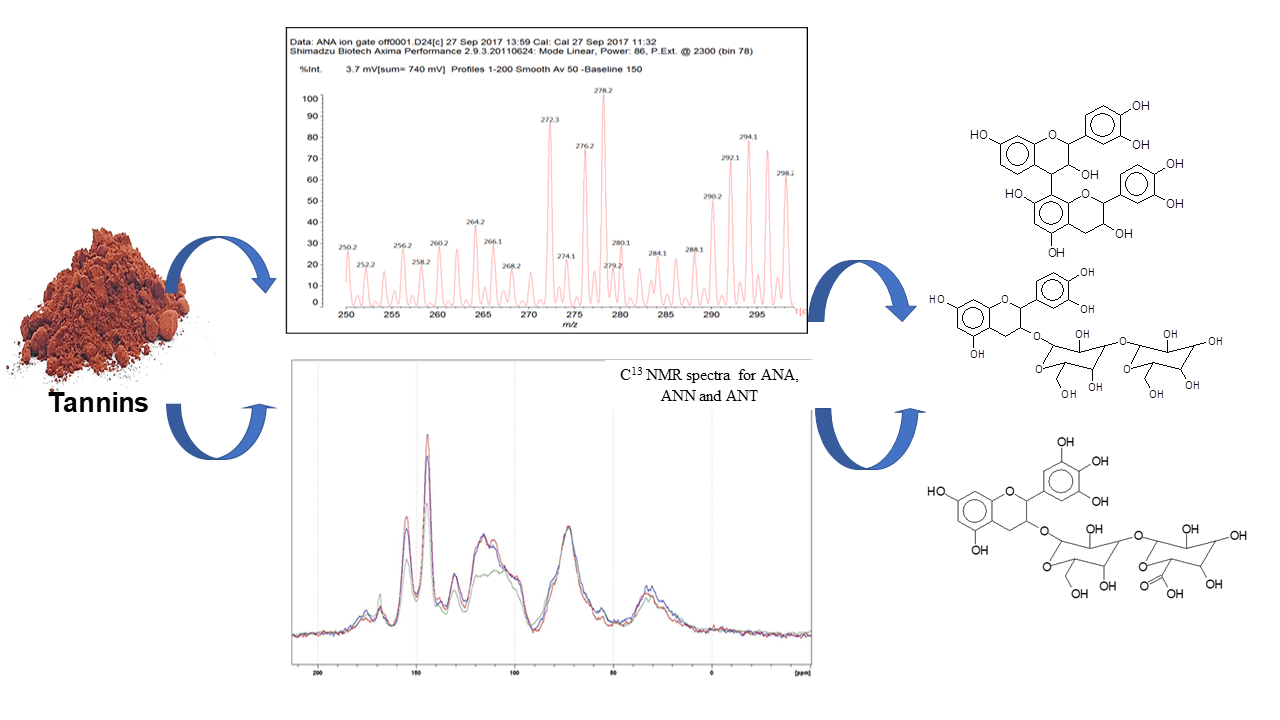 Open Access
Open Access
ARTICLE
Structural Elucidation of the Polymeric Condensed Tannins of Acacia nilotica Subspecies by 13C NMR, MALDI-TOF and TMA as Sources of Bioadhesives
1 Institute of Engineering Research and Materials Technology, National Center for Research, P.O. Box 2404, Khartoum, Sudan
2 ENSTIB-LERMAB, University of Lorraine, 27 rue Philippe Seguin, Epinal, 88000, France
3 Department of Materials Science and Engineering, Institute of Analytical Sciences and Physico-Chemistry for the Environment and Materials-Xylomat (IPREM-UMR5254), University of Pau and the Adour Region, E2S UPPA, CNRS, Mont de Marsan, 40004, France
* Corresponding Authors: Zeinab Osman. Email: ; Antonio Pizzi. Email:
Journal of Renewable Materials 2024, 12(7), 1291-1310. https://doi.org/10.32604/jrm.2024.051619
Received 11 March 2024; Accepted 09 May 2024; Issue published 21 August 2024
Abstract
Tannin was extracted from different subspecies of Acacia nilotica, Acacia nilotica nilotica (Ann), Acacia nilotica tomentosa (Ant) and Acacia nilotica adansonii (Ana). The aim was to elucidate their structure and evaluate their reactivity as bioadhesives in the wood industry. The extracts were prepared by hot water extraction (90°C temperature). Their gel time with paraformaldehyde was used at first to compare their reactivity. The tannin contents and the percentage of total polyphenolic materials in different solutions of the extracts spray dried powder were determined by the hide powder method. Concentrated solutions (47%) were tested by both MALDI ToF, CNMR. The thermomechanical analysis (TMA) was performed to evaluate their modulus of elasticity (MOE) at different pHs. The gel times of all the three tannin extracts showed that their reactivity and it was comparable to other known procyanidin/prodelphinidin tannin extract types. Ana, Ann and Ant showed highest percent of total polyphenolic materials at 70%, 64%, and 57%, respectively. The 13CNMR spectra showed that the three subspecies of condensed tannins were mainly constituted of procyanidins (PC) and prodelphinidins (PD) in slightly different ratios. Ann (56.5% PC and 43.4% PD), Ant (57%PC and 43% PD) and Ana (58% PC and 42% PD). MALDI–TOF spectra showed the presence of flavonoid monomers, and oligomers some of which linked to short carbohydrates monomers or dimers. TMA revealed that the three types of tannins had high MOE at their initial pH (5).Graphic Abstract

Keywords
Cite This Article
 Copyright © 2024 The Author(s). Published by Tech Science Press.
Copyright © 2024 The Author(s). Published by Tech Science Press.This work is licensed under a Creative Commons Attribution 4.0 International License , which permits unrestricted use, distribution, and reproduction in any medium, provided the original work is properly cited.


 Submit a Paper
Submit a Paper Propose a Special lssue
Propose a Special lssue View Full Text
View Full Text Download PDF
Download PDF Downloads
Downloads
 Citation Tools
Citation Tools